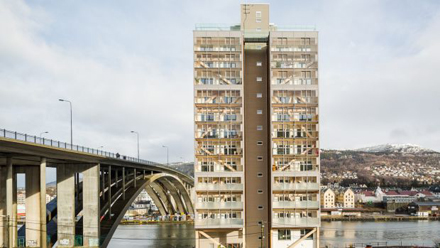
The durability of timber components is just as much about design and environment as it is about preservative treatment for wood. Timber in construction has undergone something of a renaissance, led by the desire to use more environmentally-friendly materials and to reduce construction costs. Sources: Timberbiz, Trada UK
The development of modified wood and engineered timber such as glulam and CLT provide new ways of achieving modern construction goals over a reduced construction time.
While timber is at risk to biological decay, a combination of appropriate design and material selection will mitigate this risk. Projects such as WoodBuild, PerformWood and DuraTB have increased our understanding of the performance of wood in service. This has led to modelling of products during their service life, as well as providing guidance for avoiding risks of decay often associated with prolonged exposure to high moisture levels.
Another study shows that the use of mass timber construction such as CLT led to lower on-site labour costs, a lower environmental impact and the possibility of improved amenity and reduced running costs for owners and occupiers.
The performance or service life of wood products is based on a combination of end use and degrading parameters. The concept of ‘use classes’ is related to the susceptibility to biological attack of an element and depends on differences in exposure environments. Use classes are further defined by the time wood is exposed to high moisture levels (often defined as 20%).
Similarly the design of timber components and structures plays an important role in service life. For example, service life increases when avoiding ground contact, covering end grains and avoiding moisture traps.
In Europe, CEN/TC 38 aims to progress standards for wood preservatives and preservative-treated wood, modified wood and untreated wood. It is developing terminology, analytical methods, biological tests, classifications and specifications, in accordance with market needs and European regulations.
This has helped lead to a gradual shift from traditional wood preservation to wood protection, which is based not only on the inherent characteristics of the wood itself but also on design, maintenance, exposure and moisture risk.
Life cycle analysis addresses the entire life cycle of a product and a wide range of environmental impacts, avoiding ‘problem shifting’ – for example from one life cycle stage to another or from one environmental compartment to another.
Biological durability is the key factor determining performance for wood in different use classes. The robust laboratory and field test methods that exist make it possible to assign a durability rating (from non-durable to very durable) to timber linked to the intended use class and assuming a worst-case scenario.
The use of heartwood from more durable timber species, wood preservatives or modified wood can also improve the service life of outdoor products. Despite these, better design must also play a part in ensuring their satisfactory service life. While timber indoors (use classes 1 and 2) would normally be dry, care must be taken during construction to ensure that elements are kept dry or allowed to dry. Internal timber should also be protected from interstitial condensation, such as moisture from wet rooms, or from poor design such as moisture ingress through building elements.
While work is ongoing in these areas, it is hoped that developments will continue to advance opportunities for timber, and in particular engineered wood products, to meet modern construction needs.





